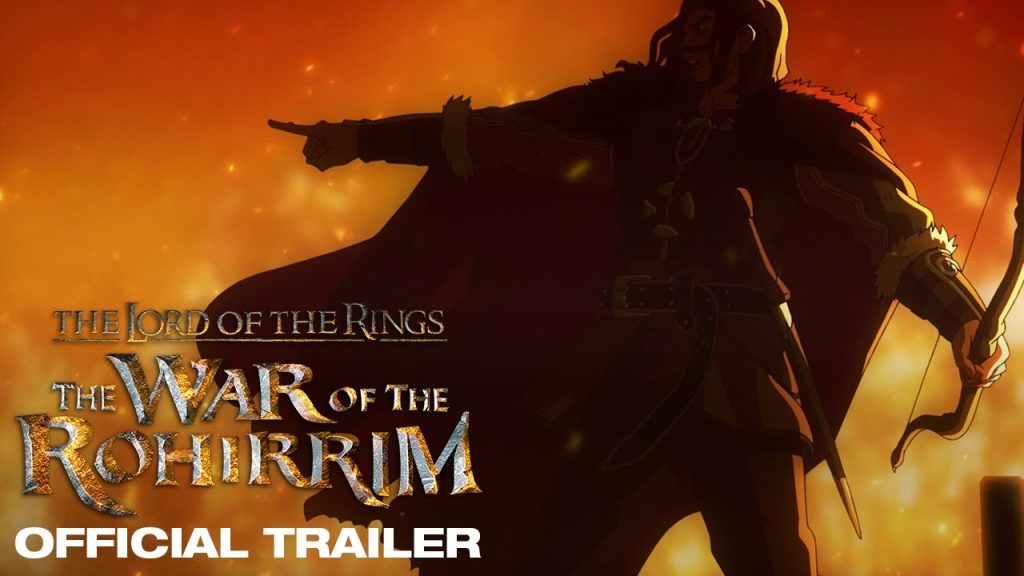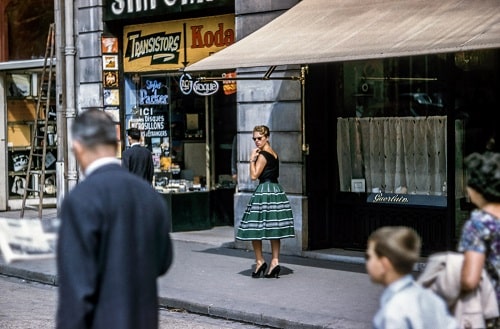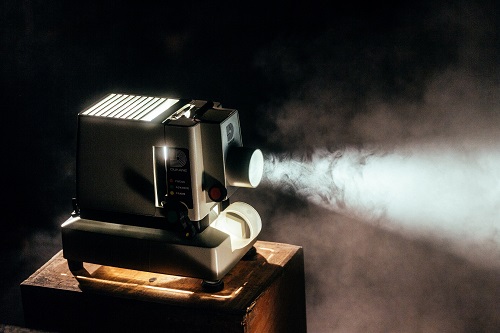There’s something uniquely thrilling about a slasher film. The suspense, the storytelling, and yes, even the scares, combine to create an unforgettable movie-watching experience. As the nights grow longer and the chill in the air deepens, it’s the perfect time to gather friends for a scary movie night. But not just any films will do—you’ll want the cream of the crop, the best slasher films that promise to keep everyone on the edge of their seats.
Choosing the right flicks for your spooky soirée can be daunting with so many classics and new entries in the genre. Whether you’re in the mood for groundbreaking originals or modern spine-tinglers that redefine fear, this guide has got you covered. Let’s dive into a curated list of slasher films that are sure to bring the thrills and chills needed for the ultimate scary movie night.
Halloween (1978)
As the curtain falls on a description of suspenseful storytelling in slasher cinema, it’s time to delve into one of the torchbearers of the genre: John Carpenter’s “Halloween.” Released in 1978, this film not only set high standards for horror but also defined the slasher genre for decades to come.
Plot and Atmosphere
“Halloween” tells the chilling story of Michael Myers, who returns to his quiet hometown of Haddonfield to relive his gruesome past and find new victims. On a cold Halloween night, he stalks babysitter Laurie Strode and her friends, delivering scare after carefully crafted scare. The simplicity of the plot, enhanced by Carpenter’s direction, cultivates a palpable tension that lingers long after the credits roll.
Iconography and Impact
The visual impact of Michael Myers, with his emotionless mask and dark overalls, has become iconic in horror culture. The film cleverly uses first-person camera angles to bring audiences directly into the perspective of the killer, a technique that has been emulated by countless films since. Carpenter’s soundtrack, particularly the unforgettable theme song, adds layers of dread that are now synonymous with the Halloween season.
Performance and Legacy
Jamie Lee Curtis’s portrayal of Laurie Strode is both relatable and heroic, marking her debut as the quintessential “final girl” in horror films. Her performance grounds the supernatural elements of the story in a relatable fight for survival. “Halloween” not only sparked Carpenter’s illustrious career but also inspired a franchise and numerous adaptations, each attempting to capture the magic of the original.
“Halloween” stands as a monumental film in the horror and slasher genre. It masterfully combines mood, soundtrack, and genuine scares to create an atmosphere of suspense that’s hard to replicate. If you’re looking to include a classic in your scary movie night that promises both thrills and a deep dive into the origins of slasher films, John Carpenter’s “Halloween” is an unbeatable choice.
Scream (1996)
Following the terrifying trails blazed by earlier entries in the slasher genre, “Scream” (1996) directed by Wes Craven, rejuvenated the horror film landscape with its innovative approach. The film cleverly blends meta-humor and self-referential content with classic slasher elements, creating a fresh take on the genre that appeals to both new and seasoned horror fans.
Plot and Setting
Set in the seemingly quiet town of Woodsboro, “Scream” opens with a chilling scene that sets the tone for the entire movie. The film follows Sidney Prescott, played by Neve Campbell, who becomes the target of the now-iconic Ghostface killer. This masked antagonist not only terrorizes Sidney and her friends but also forces them to confront horrors from their past. The plot cleverly intersperses moments of terror with lighter, self-aware dialogue that critiques and pays homage to horror movie clichés.
Characters and Performances
“Scream” features a young and dynamic cast that includes Drew Barrymore, Courteney Cox, and David Arquette alongside Neve Campbell. Each actor delivers a performance that brings depth to their character, deftly balancing fear and humor. Cox, as ambitious reporter Gale Weathers, and Arquette, playing the earnest yet bumbling Deputy Dewey, provide standout performances that add layers to the story’s intense main narrative.
Impact on the Genre
“Scream” not only enjoyed massive box office success but also left an indelible mark on the slasher genre. By openly acknowledging the typical tropes of slasher films through its characters’ dialogues, it invited viewers to participate in a game of guessing ‘who’s next’ and ‘who’s the killer,’ revamping the predictability of traditional slasher films. Its success spawned multiple sequels and even inspired a series, cementing its place in horror film history.
Style and Innovation
One of the most distinctive aspects of “Scream” is its ability to maintain genuine suspense and horror while engaging in a dialog about the very conventions it employs. This metafictional method is complemented by Craven’s skilled direction, which employs inventive camera angles and timely jump scares that keep audiences on the edge of their seats. The film’s clever script and sharp direction make it both a critical and fan favorite, ensuring its place in the pantheon of essential horror films.
“Scream” stands as a testament to Wes Craven’s ability to redefine and energize the slasher genre, making it a perfect choice for a scary movie night that offers both thrills and a smart examination of horror tropes.
Friday the 13th (1980)
Overview and Impact
“Friday the 13th” has etched its name into the annals of horror movie history with its introduction in 1980. Directed by Sean S. Cunningham and penned by Victor Miller, the film unfolds around the eerie, fictional Camp Crystal Lake. It showcases a gripping tale where the past tragedy of a young boy’s drowning turns into a vengeful killing spree. The film is best known for the birth of Jason Voorhees, one of horror’s most iconic figures, though in this original installment, his presence is more spectral, foreshadowing the havoc he would wreak in sequels.
Key Features and Cinematic Techniques
The movie leverages a straightforward yet effective approach to suspense and terror, predominantly through its pioneering use of point-of-view shots. These shots effectively place viewers in the shoes of the unseen killer, heightening the tension and fear of the unknown. The soundtrack, composed by Harry Manfredini, particularly the infamous “ki ki ki, ma ma ma,” is crafted from distorted voice echoes, adding a haunting layer to the chilling atmosphere. This auditory trademark would become synonymous with the looming threat of danger throughout the series.
Performance and Character Development
The cast, led by Betsy Palmer as the surprisingly complex antagonist Pamela Voorhees, delivers performances that blend naturalism with the exaggerated terror essential to slasher films. The characters, although not deeply developed, serve their purpose as suspense conduits, propelling the plot towards its shocking climax. The role of the final girl, played by Adrienne King (Alice), introduces viewers to a resilient protagonist who must summon unforeseen strength to survive, a trope that would become a staple in slasher films hereafter.
Comparison to Peers
When placed alongside contemporaries like “Halloween” and “Scream,” “Friday the 13th” distinguishes itself with a heavier emphasis on graphic violence and inventive kill scenes, setting a precedent for gore in horror. While “Halloween” relies on psychological tension and “Scream” on meta-narrative wit, “Friday the 13th” finds its niche in straightforward, visceral horror, making it indispensable for fans who favor intensity and shock value in their scary movie experience.
Value for a Scary Movie Night
Given its status as a seminal work in the slasher genre, “Friday the 13th” offers more than just historical value for a scary movie night; it provides essential context to understand the evolution of horror cinema. It delivers on the promise of a heart-racing experience through relentless suspense and iconic scenes that have influenced countless films and media. Watching it provides a foundational appreciation of the genre’s mechanics, perfect for a night dedicated to classic horror.
A Nightmare on Elm Street (1984)
Building on the compelling exploration of genre classics, “A Nightmare on Elm Street” deserves special mention on any list of must-watch slasher films for a movie night designed to thrill and terrify. Directed by Wes Craven, the visionary behind “Scream,” this film introduces viewers to one of the most unforgettable horror villains: Freddy Krueger. Krueger, a disfigured monster who attacks his victims in their dreams, ensures that sleep becomes a terrifying prospect.
Storyline and Setting
The plot centers around a group of teenagers in the fictional town of Springwood, Ohio, who are haunted in their dreams by Freddy. The concept of a killer infiltrating dreams combines psychological terror with physical danger, making it a unique twist on traditional slasher tropes. As teenagers are picked off one by one, the survivors realize they must uncover the dark secrets of their parents’ past to stop Freddy. The narrative expertly blends reality and nightmares, keeping viewers on edge.
Cinematic Techniques and Special Effects
Craven’s direction in “A Nightmare on Elm Street” showcases his flair for merging inventive special effects with a suspense-driven story. Notable techniques include the visually striking scenes where Freddy’s clawed hand emerges from the bathwater and the unforgettable, eerie sequence of a victim being dragged up a wall. These effects, while dated by modern standards, were revolutionary at the time and contribute significantly to the film’s chilling atmosphere.
Character Development and Performances
Heather Langenkamp stars as Nancy Thompson, the film’s protagonist and a defining “final girl” in horror cinema. Her transformation from an average teenager into a battle-hardened survivor is compelling and provides a strong emotional anchor to the story. Robert Englund’s portrayal of Freddy Krueger, with his malevolent wit and ghastly appearance, is iconically terrifying. Englund’s performance adds layers to the character, making him a villain that is as charismatic as he is frightening.
Cultural Impact and Legacy
“A Nightmare on Elm Street” stands not only as a pivotal work in Craven’s career but also as an influential piece in the evolution of horror films. It introduced the concept of a villain who could attack through dreams, thus breaking new ground for psychological and supernatural elements in the slasher genre. The film’s ability to tap into the universal fear of nightmares resonates deeply with audiences, making it a staple in horror discussions. Its legacy is sustained through various sequels, a television series, and countless references in popular culture.
Conclusion
Considering its innovative approach to horror, memorable performances, and lasting impact on the genre, “A Nightmare on Elm Street” (1984) is essential viewing for fans seeking both psychological depth and effective scares in their horror film selections. Its blend of supernatural elements and slasher traditions has set a benchmark that few films in the genre have surpassed.
Psycho (1960)
Overview
“Psycho,” directed by the legendary Alfred Hitchcock, is widely regarded as one of the epochal films in the slasher genre, despite predating the term itself. The film introduces audiences to Norman Bates, a seemingly unassuming motel manager with dark secrets. The narrative unfolds with Marion Crane, played by Janet Leigh, who ends up at the Bates Motel after embezzling money. The iconic shower scene, where Marion meets her untimely demise, remains one of the most famous moments in film history.
Key Features and Cinematic Techniques
Hitchcock’s “Psycho” is renowned for its black-and-white cinematography, enhancing the film’s moody, suspenseful atmosphere. The director’s use of sharp, angular shots contributes to a feeling of unease throughout the film. Bernard Herrmann’s eerie score, particularly during the shower scene, plays a pivotal role in amplifying the suspense and horror, making the music a character in its own right.
Impact and Legacy
“Psycho” challenged and subsequently changed the cinematic norms of its time, particularly in terms of on-screen violence and the portrayal of sexuality. It is credited with paving the way for more explicit content in mainstream cinema. The film’s twist ending, which reveals the true nature of Norman Bates and his mother, remains one of the most shocking in film history. This plot twist not only heightens the horror of the narrative but also redefined the horror genre, setting a standard for future thrillers and horror films.
Comparison With Other Slasher Films
Compared to other films like “Halloween” or “Friday the 13th,” “Psycho” stands out due to its psychological depth and the complexity of its antagonist. While later slasher films often rely on graphic violence and shock value, “Psycho” focuses on psychological horror, building tension and fear through character development and atmospheric tension rather than overt gore.
Conclusion
For anyone planning a scary movie night, “Psycho” offers more than just chills and thrills. It delivers a masterclass in filmmaking and suspense that continues to influence the horror genre today. Its legacy as a pioneering work in psychological horror and its role in shaping cinematic storytelling are undeniable, making it an essential inclusion in any horror film marathon.
Final Thoughts on Slasher Films
Gathering with friends for a scary movie night becomes a memorable adventure with the right selection of slasher films. From the suspenseful chases in “Halloween” to the clever twists in “Scream,” each film offers a unique flavor of fright. “Friday the 13th” ramps up the intensity with its graphic violence while “A Nightmare on Elm Street” and “Psycho” delve deep into psychological terror. These films not only promise to keep everyone on the edge of their seats but also spark lively discussions about their iconic scenes and groundbreaking filmmaking techniques. So grab the popcorn, dim the lights and prepare for a night filled with screams and thrills. After all, what’s a movie night without a little heart-racing excitement?



 RELATED POSTS
RELATED POSTS





0 Comments